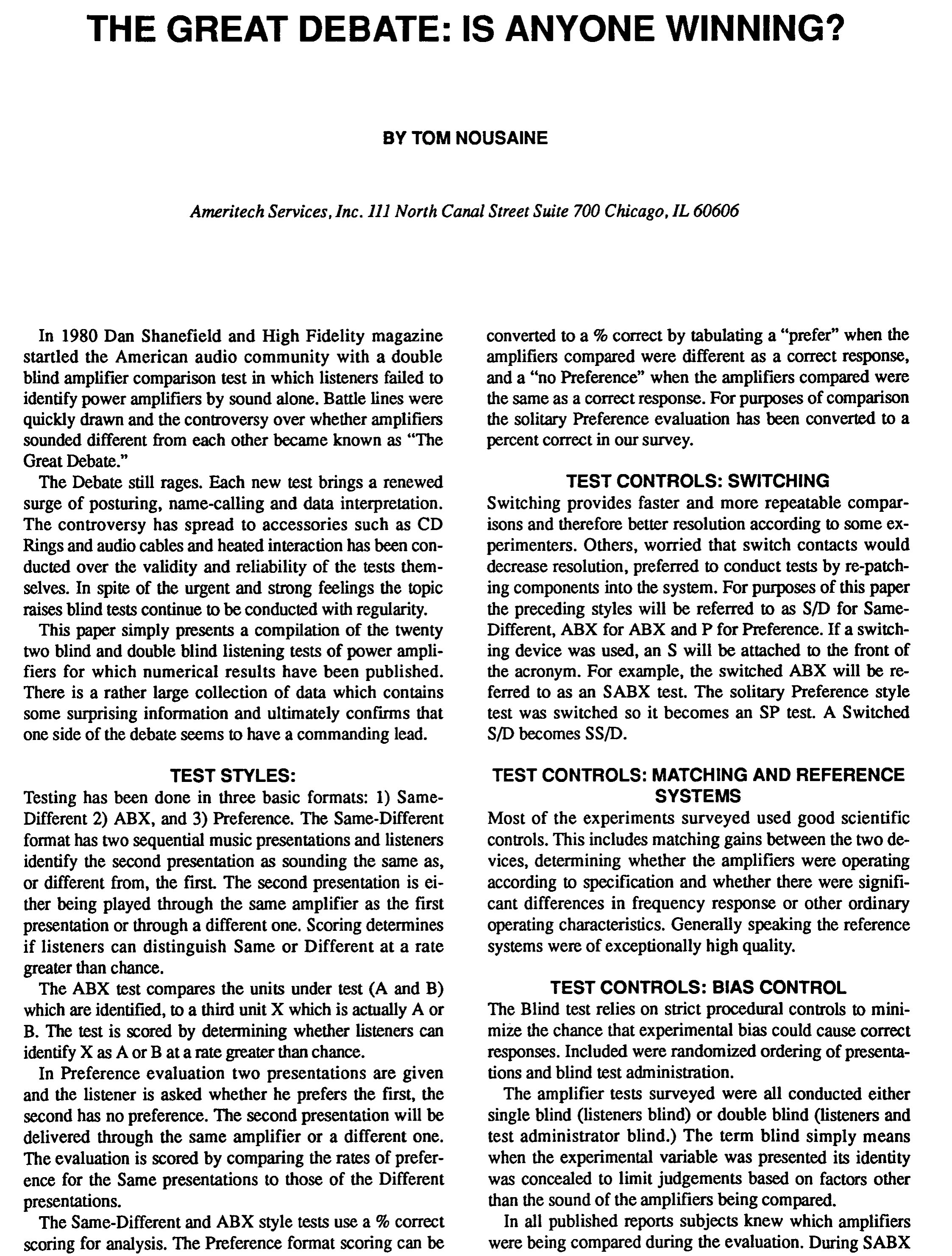MAB
Major Contributor
This would be a good club activity. I actually wish it was a larger part of testing, valid comparisons to look for differences, rather than the confusing 'speaker roundups' that often occur.Yeah, I could build it, but could I get my local audio club to help sponsor me to set it up in a room at CAF? Maybe, maybe not. I think it would be a cool "attraction" at an event like that. There's always those rooms where you wonder what they are selling and why they even have the room in the first place. A room with a sign out front reading, "TEST YOUR AUDIOPHILE CHOPS HERE!" would be fun, and I wouldn't have to use currently hot new speaker designs, just things that are well known or have interesting behaviors. Could give anyone that gets a certain score a prize or something. I think a lot of people would be interested in the challenge. We think we know what we know and some are curious and brave enough to test it.
In the 'Blind Listening Test 2' post above, they did mention the need for larger sample size. Perhaps wives (especially extreme far-field), and pets (mostly near-field)... Just kidding.
Conventions (for me) are so much overload, I'm not sure I could calm myself down and listen critically in a study.
But if you have an active club, it seems for a few bucks and a few evenings of participation in a study you could get a result. I think you need to have a good hypothesis to test combined with a well-designed experiment to test the hypothesis, and decent stats skills to be able to understand the distribution of answers. Hard to test: is a speaker good. Easier to test: is speaker A audibly different than speaker B?


